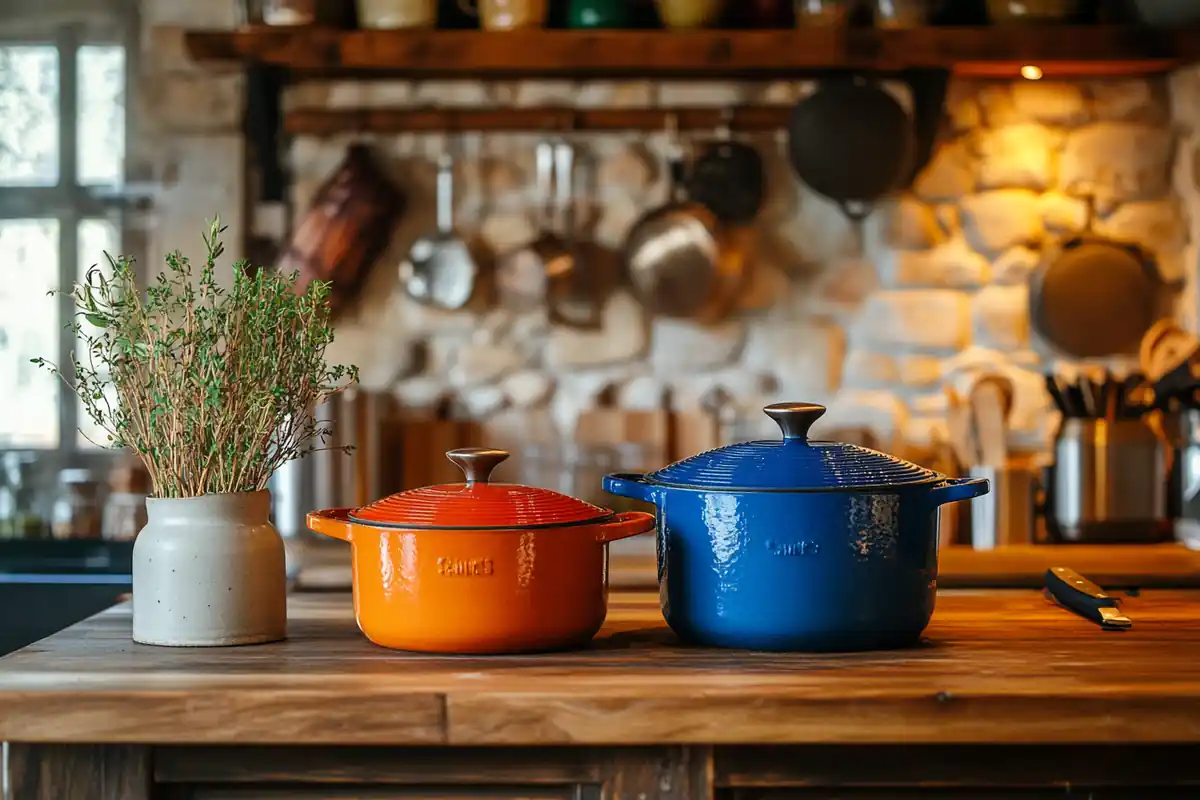Cooking enthusiasts often find themselves pondering the differences between a Dutch oven and a cocotte. These versatile pieces of cookware are staples in many kitchens, but their unique features and cultural roots can leave people scratching their heads. In this article, we’ll unravel the mysteries of these two culinary tools, comparing their designs, uses, and benefits. Whether you’re a seasoned chef or a beginner in the kitchen, this guide will help you make informed choices for your cooking needs.
Introduction and Overview
What is This Article About?
In the world of cookware, terms like Dutch oven and cocotte are often used interchangeably, leading to plenty of confusion. Are they really the same, or are there subtle differences that make each special? This article dives deep into their definitions, origins, and how they’ve evolved over time.
Why the Confusion?
It’s not surprising that people mix up these two cookware types. Both are made from durable materials like cast iron, come in similar shapes, and can be used for slow cooking, braising, or baking. However, their history and cultural associations set them apart. The Dutch oven boasts a rich history rooted in global cuisine, while the cocotte holds a cherished place in French cooking.
Whether you’re curious about their shapes, sizes, or uses, or you’re wondering which one suits your needs best, this article has you covered. By the end, you’ll have all the details to choose wisely and elevate your culinary creations!
What is a Dutch Oven?
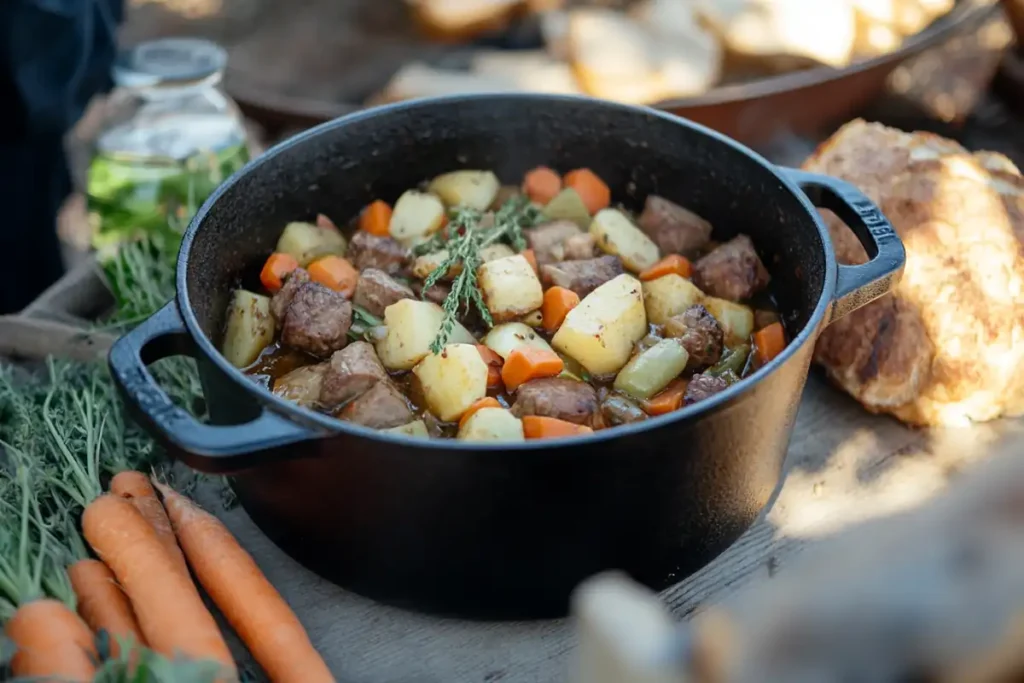
Definition and Origins
A Dutch oven is a heavy-duty cooking pot, typically made from cast iron, often coated with an enamel layer for added durability and ease of cleaning. Its origins date back centuries, with its name derived from the Dutch casting process used to make similar pots in the 17th century. Over time, the Dutch oven became a household name, thanks to its versatility and durability.
Materials and Design
Dutch ovens are typically constructed from:
- Cast Iron: Provides even heat distribution, making it ideal for slow cooking.
- Enameled Cast Iron: A modern touch that prevents rust and makes cleaning a breeze.
- Aluminum: A lightweight option, though less common.
Design-wise, Dutch ovens have thick walls, tight-fitting lids, and sturdy handles. These features ensure moisture retention, which is key for dishes like braises, stews, and soups.
Their versatility extends to their use in ovens, stovetops, and even campfires, making them indispensable in both rustic and modern kitchens.
Popular Uses
The Dutch oven is a multitasker in the culinary world. It excels in:
- Slow Cooking: Perfect for tenderizing tough cuts of meat.
- Baking: Ideal for crusty artisan bread and desserts.
- One-Pot Meals: From hearty stews to creamy risottos.
Why It Stands Out
One of the main reasons the Dutch oven is so beloved is its adaptability. Whether you’re simmering soups or roasting a chicken, this cookware maintains consistent heat, ensuring your dish cooks evenly. It’s no wonder why it has stood the test of time as a kitchen essential.
What is a Cocotte?
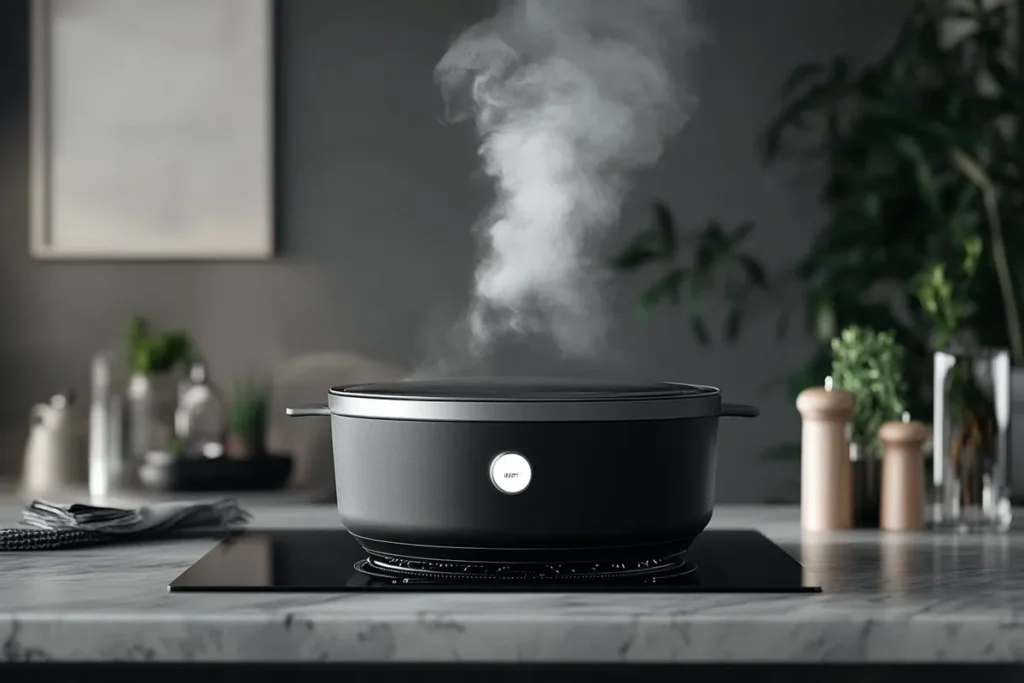
Definition and Origins
A cocotte is a French term that translates to “casserole” or “small pot,” often used to describe a small, enameled cast iron dish. While it serves many of the same functions as a Dutch oven, its roots are firmly planted in French culinary traditions. The cocotte is a staple in French kitchens, celebrated for its aesthetic appeal and precise cooking capabilities.
Materials and Design
Cocottes are made from enameled cast iron, known for its superior heat retention and non-reactive surface, which protects food from metallic tastes. They often feature:
- Elegant Shapes: Typically round or oval, designed for both function and style.
- Thick Lids with Spikes: These internal spikes help redistribute condensation, keeping dishes moist and flavorful.
- Compact Sizes: Cocottes are frequently smaller than Dutch ovens, making them perfect for individual servings or side dishes.
The design is not only practical but also visually appealing, making cocottes a popular choice for serving dishes directly at the table.
Popular Uses
The cocotte shines in preparing traditional French dishes, including:
- Braising: Ideal for coq au vin, boeuf bourguignon, and other slow-cooked classics.
- Casseroles: Perfect for gratins or layered bakes.
- Roasting Vegetables: Its compact size ensures even cooking for smaller portions.
For a deeper dive into the materials that make cookware like cocottes special, explore this guide to cookware materials.
What Makes It Unique?
Cocottes aren’t just cookware—they’re statement pieces. Their vibrant, enamel-coated exteriors and detailed designs often make them the centerpiece of a kitchen. Beyond aesthetics, their precision in maintaining moisture and heat makes them a go-to for chefs aiming to perfect slow-cooked recipes.
A Culinary Masterpiece
Though smaller and more specialized than a Dutch oven, the cocotte excels in elegance and practicality. Its heritage, combined with its modern utility, makes it a prized possession for home cooks and professionals alike.
Key Differences Between Dutch Ovens and Cocottes
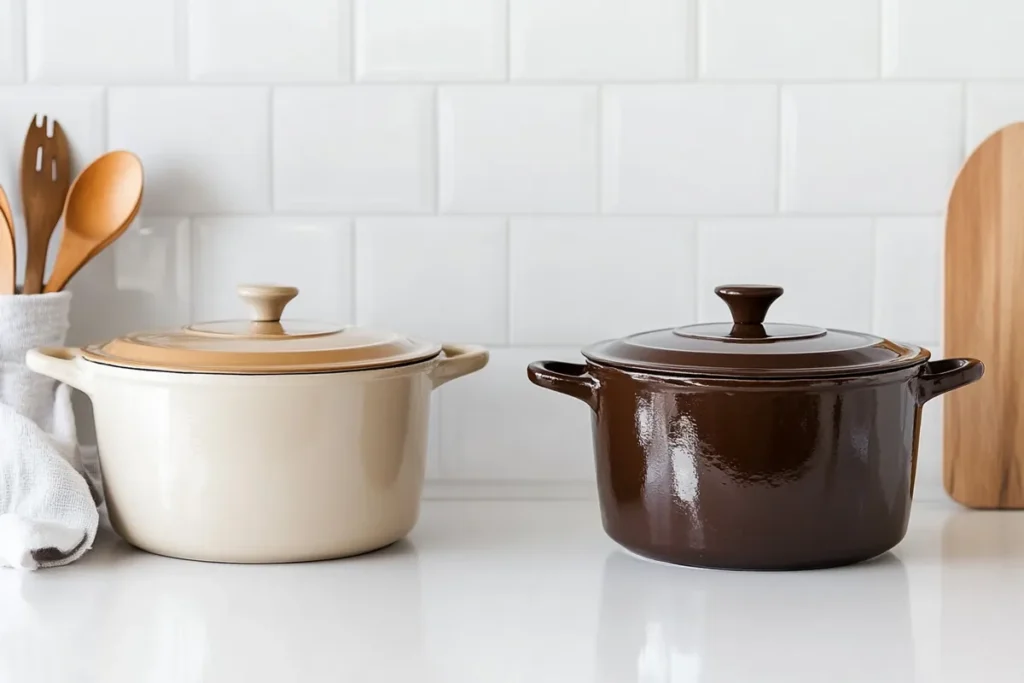
Shape and Size
One of the most noticeable differences between a Dutch oven and a cocotte lies in their shape and size.
- Dutch Ovens: Typically larger, with a deeper base, making them suitable for cooking large portions of soups, stews, or roasts. They often come in both round and oval shapes.
- Cocottes: Usually smaller and more compact, designed for individual servings or side dishes. Their petite size is perfect for more precise, gourmet recipes.
The shape also affects cooking style. A round Dutch oven may be better for soups, while an oval cocotte snugly fits cuts of meat like chicken or fish.
Weight and Build
- Dutch Ovens: Heavier and sturdier, often used for rugged cooking tasks like baking bread or roasting in a wood-fired oven.
- Cocottes: Lighter, with a more refined build that focuses on presentation as much as performance.
Weight plays a crucial role in heat distribution, and while Dutch ovens are great for larger-scale recipes, cocottes excel in precision cooking.
Cultural and Culinary Influences
The Dutch oven has a global reputation for versatility, used in cuisines ranging from American comfort food to rustic Italian dishes. On the other hand, the cocotte is deeply rooted in French culinary traditions, often associated with gourmet recipes like boeuf bourguignon and coq au vin.
This cultural distinction shapes how each piece is perceived and utilized. Dutch ovens cater to everyday cooking, while cocottes are seen as luxurious, elegant options for special occasions.
Cost Differences
Price can vary significantly between these two.
- Dutch Ovens: Typically more affordable, especially when considering non-enameled cast iron options. They’re widely available in various price ranges.
- Cocottes: Often priced higher due to their detailed craftsmanship and smaller production scales, especially from premium brands like Staub.
Versatility
Dutch ovens are the workhorses of the kitchen, used for everything from braising to baking. Their size and durability make them ideal for:
- Large family meals.
- Camping trips where rugged cookware is a must.
Cocottes, however, focus on specific culinary tasks and are excellent for:
- Single-serving portions.
- Dishes requiring even moisture distribution, thanks to their spiked lids.
Which Is Right for You?
Choosing between a Dutch oven and a cocotte boils down to your cooking style and needs. If you value versatility and durability, a Dutch oven is likely the better choice. However, if you’re drawn to elegance and precision cooking, the cocotte might be your match.
Choosing the Right Cookware for Your Needs
Cooking Style Considerations
Your choice between a Dutch oven and a cocotte heavily depends on your cooking style. If you frequently cook for larger groups or love making one-pot meals, the Dutch oven is your go-to. Its larger capacity and robust design make it perfect for hearty stews, soups, or roasted meats.
However, if you prefer precision cooking, elegant presentations, or smaller portions, the cocotte shines. Its compact size is excellent for crafting gourmet dishes or side servings. Plus, the unique spiked lid design ensures your dishes stay moist and flavorful.
Budget and Aesthetic Preferences
Let’s face it—price and aesthetics can be deciding factors too.
- Dutch Ovens: Available in a broader range of prices, from budget-friendly models to high-end enameled options. Their straightforward design focuses more on function than form.
- Cocottes: Often come with a higher price tag, particularly from premium brands like Staub. However, their sleek, colorful designs can elevate any kitchen or dining table.
If aesthetics matter to you, the vibrant, glossy finishes of cocottes may be worth the investment. For purely practical needs, the Dutch oven is an economical choice.
Brand Recommendations
Certain brands specialize in these cookware types:
- For Dutch Ovens: Le Creuset, Lodge, and Cuisinart are popular choices, offering a range of materials and price points.
- For Cocottes: Staub is renowned for its enameled cocottes, combining functionality with French elegance.
When choosing, consider your needs and long-term goals. A Dutch oven might be your best friend for daily meals, while a cocotte is ideal for special occasions or more refined recipes.
Practical Tips for Making the Right Choice
- Think About Portions: If you cook for a family, go for a larger Dutch oven. For individuals or small households, a cocotte works wonderfully.
- Evaluate Your Cooking Habits: Do you often bake bread or prepare stews? A Dutch oven is unbeatable. Prefer sophisticated French dishes? Cocottes are better.
- Storage Space: Dutch ovens can be bulky, while cocottes are more compact and easier to store.
Whether you’re a casual home cook or an aspiring gourmet chef, understanding the strengths of these cookware options ensures you’ll always have the right tool for the job. With careful consideration, your choice can elevate your cooking and dining experience!
Maintenance and Care
Cleaning Tips
Proper maintenance is crucial to keep your Dutch oven or cocotte in top shape. Both types of cookware require specific cleaning practices to preserve their enameled surfaces and durability.
- Avoid Abrasive Cleaners: Harsh scrubbing pads or powders can damage the enamel. Use a soft sponge with warm, soapy water.
- Soak for Stubborn Stains: If food is stuck, soak the pot in warm water with a bit of baking soda or dish soap before cleaning.
- Dishwasher Use: While some enameled pieces are technically dishwasher-safe, handwashing is always recommended to extend the life of your cookware.
Storage Suggestions
When storing your cookware, take extra precautions to avoid chipping or scratching:
- Place a soft cloth or paper towel between stacked cookware to protect the enamel.
- Store lids separately or upside down inside the pot to save space and avoid damage.
- Keep your cookware in a dry area to prevent rusting on unenameled edges, like the rims or base.
Handling Tips
Both Dutch ovens and cocottes are heavy, and improper handling can lead to accidents or damage.
- Use Two Hands: Always lift the pot with both hands to avoid dropping it.
- Heat Gradually: Sudden temperature changes can cause cracking. Never place a cold pot on a hot burner or vice versa.
- Avoid Metal Utensils: Use wooden, silicone, or nylon utensils to prevent scratching the enamel surface.
Preventing Wear and Tear
Taking a few preventative steps can significantly increase the longevity of your cookware:
- Never use high heat unnecessarily; medium to low heat is sufficient due to the excellent heat retention of cast iron.
- Dry your cookware thoroughly after washing to prevent water spots or rust.
- For cocottes with spiked lids, ensure the spikes are clean and free of food debris to maintain proper condensation distribution.
Why Proper Care Matters
Regular maintenance doesn’t just keep your cookware looking great—it also ensures consistent cooking performance. Over time, neglecting care can lead to chipped enamel, rust, or uneven heating. By taking a little extra time to maintain your Dutch oven or cocotte, you’ll enjoy years of reliable use in the kitchen.
Frequently Asked Questions (FAQs)
Is a Cocotte and Dutch Oven the Same?
No, while Dutch ovens and cocottes share similarities, they’re not exactly the same. Both are made of enameled cast iron and can be used for slow cooking, baking, or braising, but they differ in design, size, and cultural origins. Dutch ovens are typically larger and more versatile, while cocottes are often compact, elegant, and tailored for French-inspired dishes.
Can a Cocotte Go in the Oven?
Absolutely! Cocottes are designed to be oven-safe, withstanding temperatures up to 500°F (depending on the brand). They are perfect for slow roasting, baking casseroles, and even bread-making. Always check the manufacturer’s guidelines, though, to ensure safe use at high temperatures.
Why Is a Dutch Oven So Special?
The Dutch oven is celebrated for its versatility and durability. Its thick walls and heavy lid provide excellent heat retention and even cooking, making it ideal for a wide range of recipes. Whether simmering stews, baking bread, or roasting meats, Dutch ovens can handle it all. Additionally, their robust construction makes them suitable for both stovetop and oven use, offering unparalleled flexibility.
Is a Cocotte Worth It?
Yes, a cocotte is worth the investment, especially if you appreciate refined cooking and stylish presentation. While they can be pricier than Dutch ovens, their ability to maintain moisture with their spiked lids, compact size for portion control, and visual appeal make them a fantastic addition to any kitchen. If you’re passionate about French cooking or hosting elegant dinner parties, a cocotte is a must-have.
Print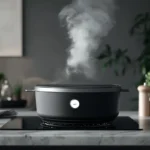
Hearty Dutch Cocotte with Seasonal Vegetables
- Total Time: 1 hour 10 minutes
- Yield: Serves 4
Description
This Dutch Cocotte is a delightful, rustic one-pot dish, perfect for family meals or cozy dinners. Packed with layers of fresh vegetables, aromatic herbs, and a rich, savory broth, it’s slow-cooked to perfection in a Dutch oven to bring out deep and comforting flavors. Ideal for vegetarians, this recipe can be easily customized with your favorite seasonal produce.
Ingredients
Vegetables:
- 3 medium potatoes, thinly sliced
- 2 carrots, peeled and sliced into rounds
- 1 zucchini, sliced into rounds
- 1 yellow onion, thinly sliced
- 1 cup cherry tomatoes, halved
- 1 red bell pepper, diced
- 2 cups spinach leaves
Herbs & Spices:
- 3 cloves garlic, minced
- 2 teaspoons fresh thyme leaves (or 1 teaspoon dried thyme)
- 1 teaspoon rosemary, chopped
- 1 teaspoon smoked paprika
- Salt and black pepper to taste
Broth:
- 1 ½ cups vegetable stock
- 1 tablespoon tomato paste
Toppings:
- ½ cup shredded Parmesan or vegan cheese (optional)
- 2 tablespoons fresh parsley, chopped (for garnish)
Additional:
- 2 tablespoons olive oil
- 1 tablespoon butter or plant-based alternative
Instructions
- Prepare the Dutch Oven:
- Preheat the oven to 375°F (190°C).
- Heat olive oil and butter in a Dutch oven over medium heat.
- Layer the Vegetables:
- Start by sautéing the onions and garlic in the Dutch oven until soft and fragrant, about 2–3 minutes.
- Add the potatoes as the first layer, followed by carrots, zucchini, cherry tomatoes, and red bell pepper. Sprinkle each layer with a bit of salt, pepper, thyme, and rosemary.
- Add Broth:
- Mix the vegetable stock with the tomato paste. Pour the mixture evenly over the vegetables.
- Bake the Cocotte:
- Cover the Dutch oven with its lid and place it in the oven. Bake for 40 minutes, or until the vegetables are tender.
- Add Spinach and Cheese (Optional):
- Remove the Dutch oven from the oven. Stir in the spinach leaves and sprinkle Parmesan or vegan cheese over the top.
- Return to the oven, uncovered, for an additional 10 minutes to allow the spinach to wilt and the cheese to melt.
- Garnish and Serve:
- Remove from the oven, let it rest for 5 minutes, and sprinkle fresh parsley on top before serving.
Notes
- Customization: Add mushrooms, sweet potatoes, or any seasonal vegetables you prefer.
- Vegan Option: Use plant-based butter and cheese for a fully vegan dish.
- Make It Heartier: Serve with crusty bread or cooked grains like quinoa or couscous.
- Stovetop Option: You can prepare this entirely on the stovetop over low heat; just ensure the vegetables cook evenly.
- Prep Time: 20 minutes
- Cook Time: 50 minutes
- Category: Main Course
- Method: Baking
- Cuisine: Dutch-inspired
Nutrition
- Calories: 220 kcal
- Sugar: 6 g
- Sodium: 450 mg
- Fat: 9 g
- Saturated Fat: 2 g
- Unsaturated Fat: 7 g
- Trans Fat: 0 g
- Carbohydrates: 29 g
- Fiber: 5 g
- Protein: 5 g
- Cholesterol: 5 mg
Keywords: Dutch Cocotte, Vegetable Stew, Dutch Oven, Comfort Food, One-Pot Meal

